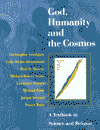Humans as Made in the Image of GodGenesis 1.26 describes humans as made in the image and likeness of God, the only creatures to which this direct connection with the divine is attributed. Theologically, then, the Christian tradition has asserted a radical discontinuity between humans and other creatures. Scientifically, the differences between humans and other animals are ones of degree, rather than a radical discontinuity of nature. (see the paradox of the development of modern humans). A Darwinian account of humanity can find no place for the notion that the species suddenly acquired a property called ‘the image and likeness of God’. Human distinctiveness evolved gradually (see the evolution of hominids). Can theology frame its understanding of the imago Dei in such a way as to take account of this perception? There are three main possibilities for grounding this concept:
This last possibility seems the most fruitful, and is
certainly in tune with the notion that the divine image developed only when
culture - including and especially religion - enabled human altruism to
transcend that of the immediate family group
Email
link | Feedback | Contributed by: Dr. Christopher Southgate and Dr. Michael Robert Negus
|





